Hydraulic fluid helps equipment and machinery function properly. It also serves many additional purposes, such as sealing, heat transfer, and lubrication. You might wonder if it can go bad. In this post, we will share an answer to that question based on our research.
Yes, hydraulic fluid can go bad. If the fluid is contaminated with air, moisture, or particles, it will deteriorate or degrade.
Continue reading to learn more about why hydraulic fluid goes bad. We will also discuss how you can tell if your hydraulic fluid has deteriorated or degraded, when to replace it, and how to prevent contamination.
What Are The Most Common Causes Of Hydraulic Fluid Degradation?
When it comes to hydraulic fluid, there are numerous potential contamination causes. Keeping your hydraulic fluids clean is essential, but even with the expensive fluids and filters, any oil degrades over time and requires replacement.
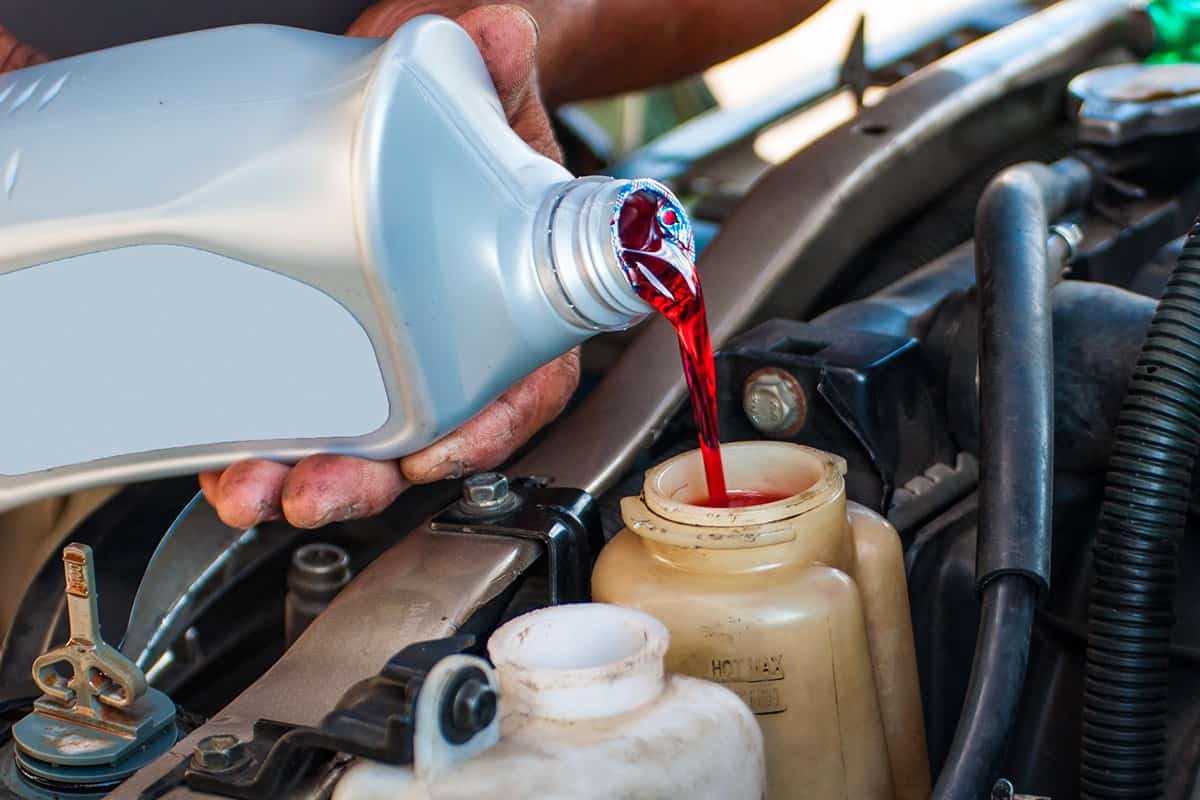
The following is a list of the most typical causes of hydraulic fluid degradation.
Oxidation
Overheating hydraulic fluid reduces its ability to prevent friction, resulting in substantial wear and tear on components.
Varnish forms in the oil at high temperatures, reducing its lubricating capabilities and increasing its viscosity. High temperatures also cause the fluid to degrade by increasing oxidation, which results in acids that corrode metal components.
Excessive temperature increases the degradation of oil additives, which may increase friction and wear and diminish corrosion resistance. Flow restriction and excessive flow are two primary reasons for oil overheating.
Flow restriction is usually caused by undersized system pipework and the use of devices like flow controllers and servo valves.
Excessive flow velocities are generated by improperly sized fluid conductors, which can increase fluid flow. Your machinery will require fluid replenishment more frequently for hydraulic equipment prone to overheating.
Water Contamination
When applied pressure and motion are present, water can produce foaming and cavitation inside the hydraulic system. It substantially increases friction and erodes components such as pistons and seals.
Water can enter the system through condensation, faulty seals, or even inappropriate fluid handling during fluid changes. Monitor the water contamination levels in your equipment by analyzing hydraulic fluid regularly.
Adhering to stringent maintenance protocols while changing the oil ensures that any water is removed when draining.
Particulate Contamination
Dirt, debris, metal shavings, and other microscopic particles accumulate in your hydraulic system over time, impairing its function. Particulates can be metal slivers caused by cavitation trouble or debris deposited in the system during servicing.
These particles can get in between seals, damage pistons, grind away at bearings, and cause valves to stick. Particulates are one of the most damaging types of hydraulic fluid degradation and the primary source of hydraulic system failure.
Air Contamination
Aeration happens when air enters a system, typically through fittings and seals. But it can also occur during fluid replenishment and servicing.
When air gets into hydraulic fluid, it transitions through four states, each with its own characteristics and effects.
The states are dissolved, free, foam, and air bubbles. While each has various impacts, aeration eventually advances fluid degradation and causes damage to system components through overheating, seal burning, and lubrication loss.
Cavitation
Cavitation happens when the amount of fluid is insufficient to meet the demands of the hydraulic circuit. It causes the pressure to drop below the hydraulic fluid's vapor pressure, resulting in vaporized fluid bubbles.
These bubbles swiftly implode, causing strong micro shockwaves that limit the power and severely damage a hydraulic system's internals.
Metallic surfaces erode over time by creating metal fatigue. Eventually, little pieces of metal break off and cause havoc on the system.
How Do You Know If Your Hydraulic Fluid Is Bad?
Identifying bad or degraded fluid is critical. Here's how you can tell if your hydraulic fluid is degraded.
Fluid Analysis Sample
Fluid analysis is required to determine whether the fluid is still in good condition or whether it poses a risk to your test systems and components.
Proper chemical analysis can help you save money by avoiding the expense of replacing functional fluid too soon and damage caused by contaminated or degraded fluid.
Unusual Smell
If you notice an unusual odor in your hydraulic fluid, this indicates a chemical breakdown.
The breakdown is typically caused by entrained air in the fluid, which produces varnish-like nitrogen-oil compounds that pollute the fluid. If there is a noticeable change in the odor of hydraulic fluid, have it chemically tested.
Milky Color
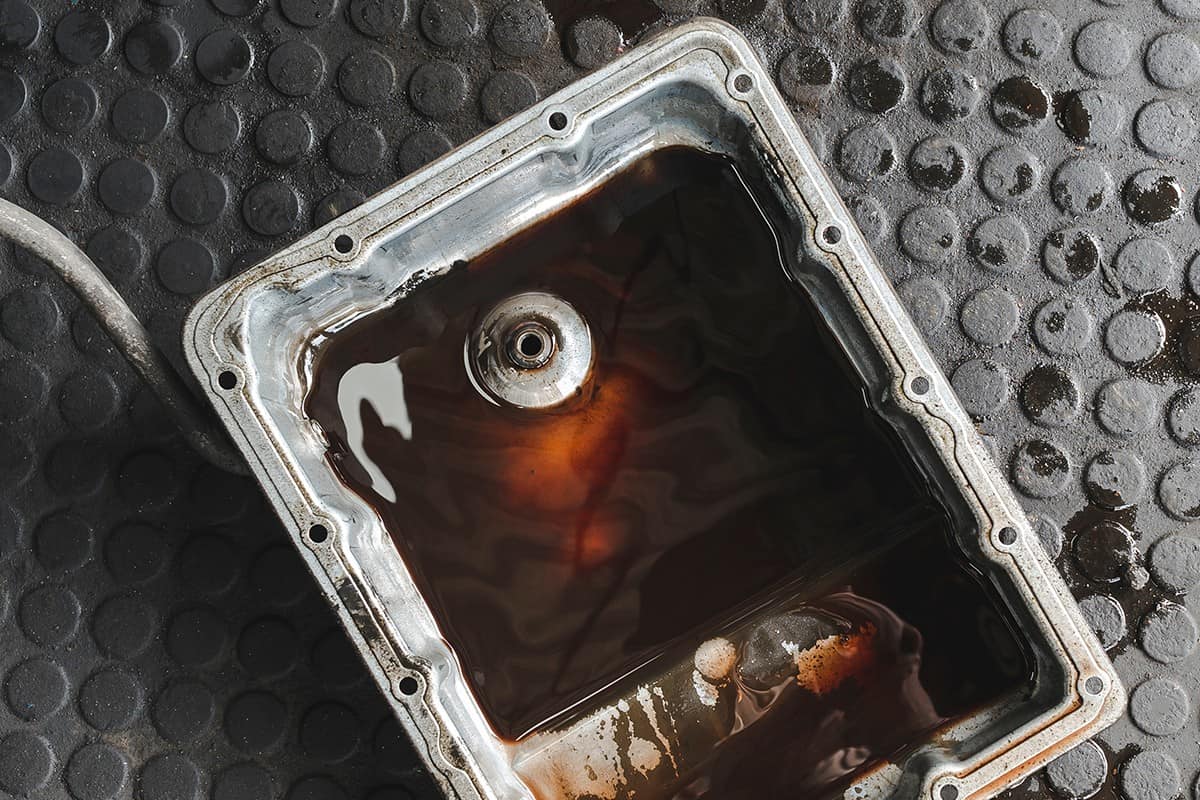
Clean fluid has a color close to amber. The presence of one or more contaminants may be indicated by a milky, dark, or otherwise unusual color. A milky look is typically indicative of water contamination.
If the fluid appears milky, you should take immediate steps to prevent severe damage to your hydraulic system. Stop the flow of water and remove the water from the system as soon as possible.
What Is The Difference Between Changing And Flushing Hydraulic Fluid?
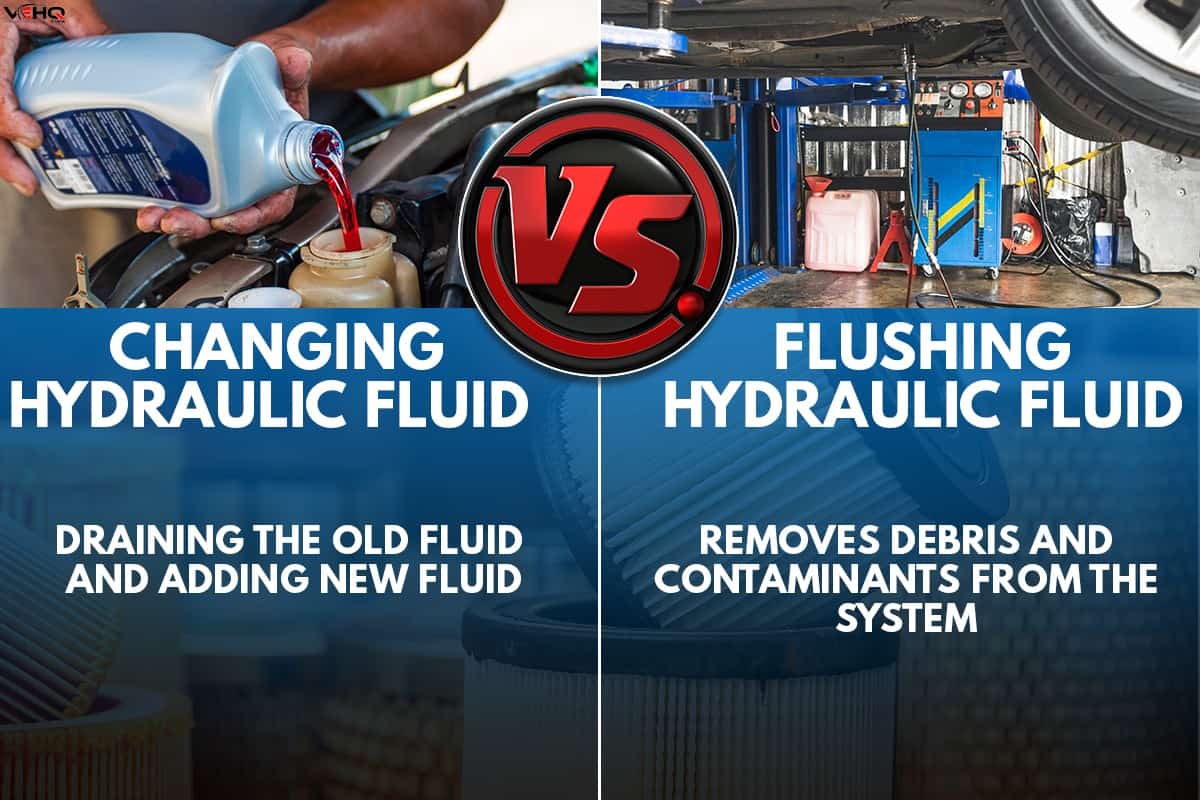
Replacing hydraulic fluid entails draining the old fluid and adding new fluid.
On the other hand, flushing the entire system is a considerably more complex and thorough process. It not only removes old hydraulic fluid but also aids in the removal of impurities.
Flushing your hydraulic fluid involves more than simply replacing it. It requires withdrawing the hydraulic fluid and forcing a lower-viscosity fluid through the system at high pressure.
This removes debris and contaminants from the system, leaving it clean and ready for adding new hydraulic fluid.
Changing your fluid regularly and flushing it as necessary is the ideal approach.
When Should You Replace Your Hydraulic Fluid?
According to experts, machinery owners should change the hydraulic fluid every 1,000 hours. The procedure is time-consuming but essential. You must also replace filters before adding the new fluid.
The easiest way to know when to replace your hydraulic fluid is to get it tested regularly. This will ensure that you change the hydraulic fluid only when necessary and not too soon or too late.
Click here to see this hydraulic fluid on Amazon.
Tips To Prevent Hydraulic Fluid Contamination
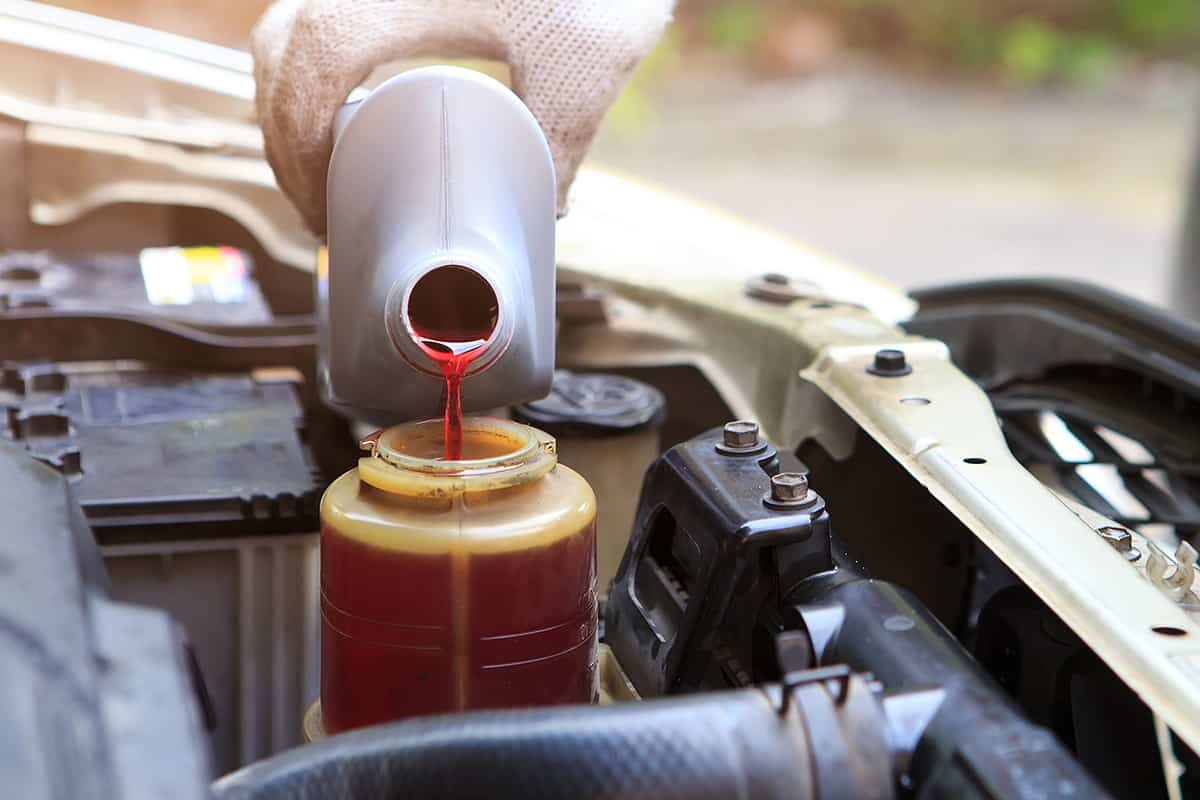
You can avoid contamination and protect your hydraulic system by following these recommendations.
Clean The Area Before Opening
Open ports or lids with trapped debris and dust on the hydraulic system surface can quickly enter the fluid. To avoid this, the technician should clean the area and the system surface before disassembly. Experts also recommend using clean tools.
Hydraulic Fluid Should Not Be Reused Or Mixed
It's critical to use brand-new, high-quality hydraulic fluid. Reusing or combining different hydraulic fluids has unfavorable results.
Used hydraulic fluid will likely contain unwanted particles. When two different hydraulic fluids are combined, the fluid characteristics will undoubtedly change, affecting the system's performance.
Replace The Filters
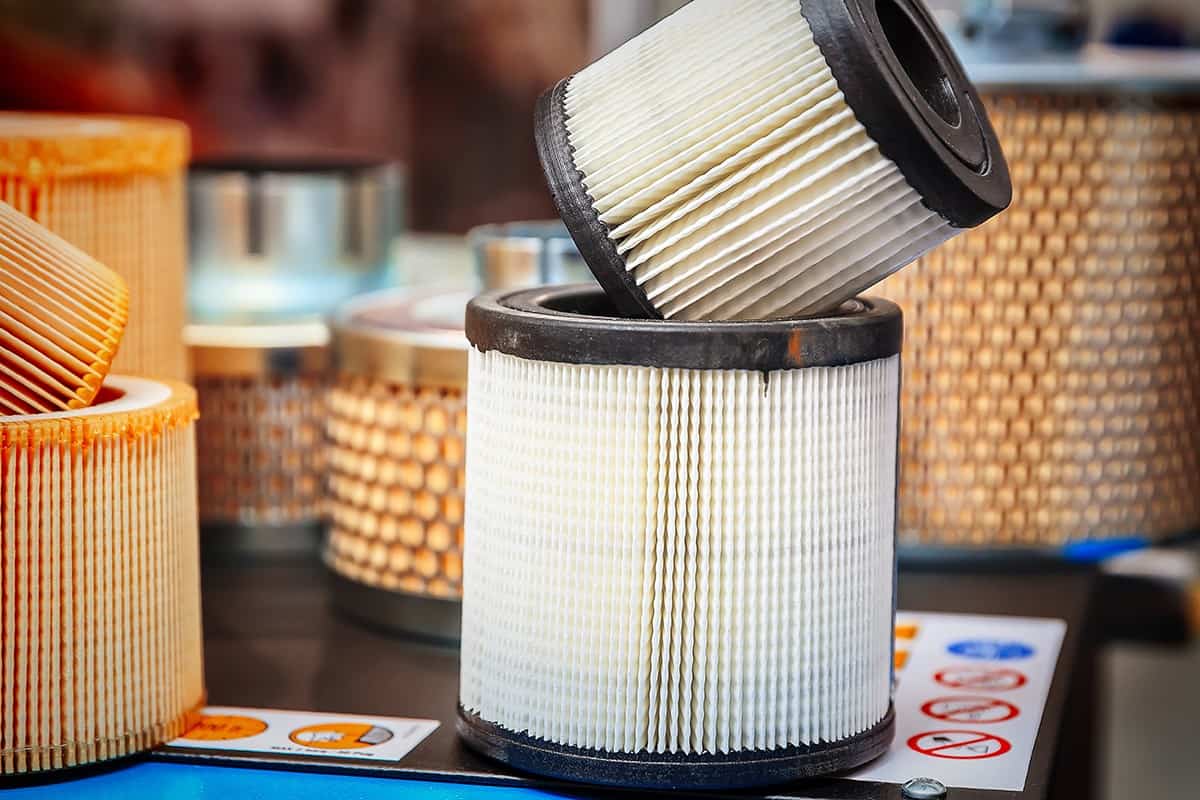
Filters in the hydraulic system remove debris and other particles from the fluid. They may become clogged if used for an extended period.
In such cases, you should replace the filter right away. Try to use a polymeric oil filter and desiccant reservoir air breather.
Click here to see this hydraulic filter on Amazon.
Fluid Handling And Storage
Debris, air, and moisture are all typical contaminants that can enter the hydraulic system if the fluid is not stored or handled appropriately.
You should store hydraulic fluid in a cool, dry, contaminant-free environment. Practice FIFO (First in, First out) stock rotation while using stored hydraulic fluids.
Avoid Fluid Leaks
Leaks not only cause fluid loss but also allow contaminants to enter. Hydraulic fluid can become contaminated via damaged seals, incorrect fitting choices, and corrosion. Regular maintenance practices are required to prevent such situations.
Conclusion
Hydraulic fluid degrades when contaminated with foreign particles, air, and water. Your hydraulic system is constantly threatened by fluid contamination. Left untreated, it can cause severe wear and long-term damage to your equipment.
Keep an eye on the state of your hydraulic fluid. Ensure you change the fluid and filters regularly, handle and store your hydraulic fluid properly, check for leaks, and avoid reusing or mixing hydraulic fluids.
Here are other articles you might find helpful:
What Is The Best Diesel Exhaust Fluid For EcoDiesel? [And When To Add It]
Diesel Exhaust Fluid Dosing Malfunction – What Could Be Wrong?


